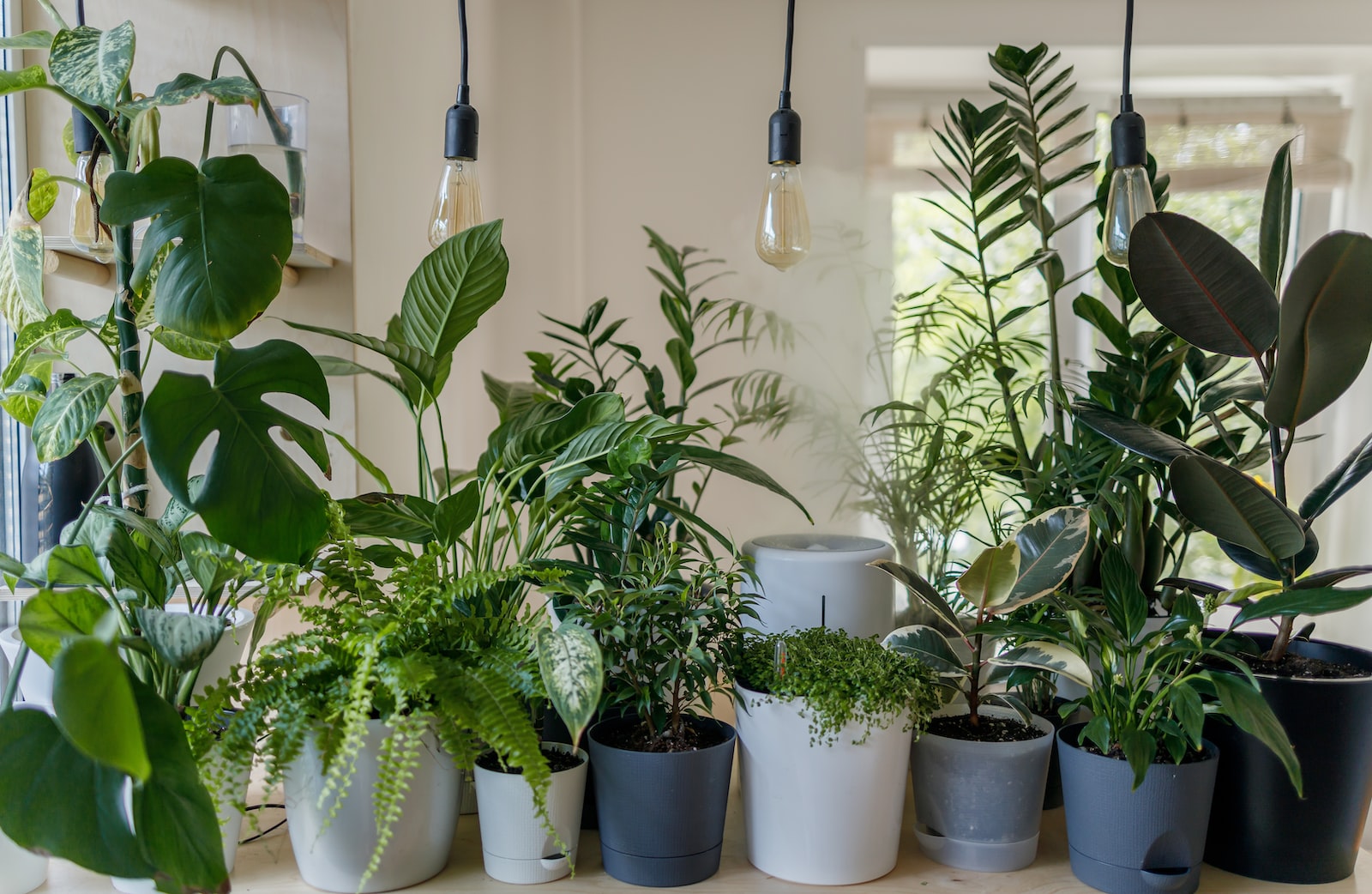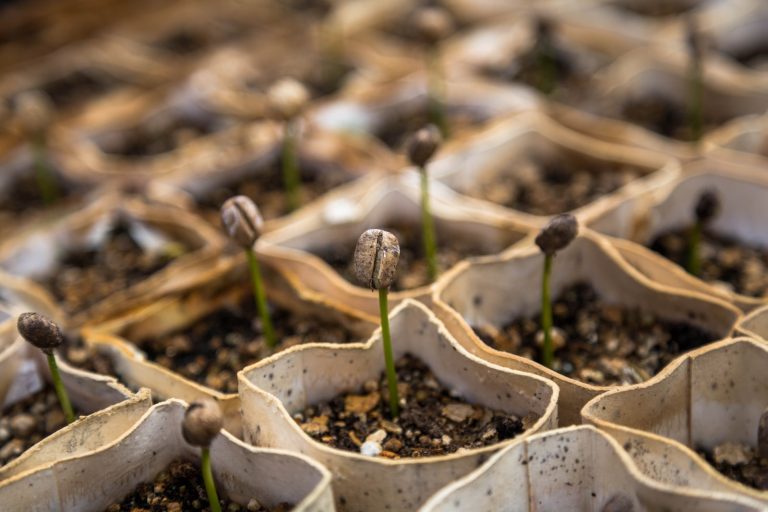How to Choose the Right Houseplant for Each Room

Are you tired of staring at empty corners and lifeless spaces in your home? Adding a touch of greenery can do wonders to spruce up any room, but each space has its unique lighting, temperature, and humidity requirements.
So how do you choose the right houseplant for every room? Fear not! In this blog post, we’re sharing expert tips on selecting the perfect plants that’ll thrive in each area of your home, from low-lit bedrooms to sunny living rooms.
Get ready to transform your space into an indoor oasis with our simple guide. Let’s get started!
Introduction to Houseplants
Plants are not only aesthetically pleasing, but they improve air quality and have been linked to improved concentration and productivity.
If you’re looking to improve your home’s atmosphere, houseplants are a great place to start. But with so many options available, it can be difficult to know which plant is right for which room.
To help you out, we’ve put together a guide on how to choose the right houseplant for each room. We’ll cover everything from the best plants for low-light conditions to those that thrive in humid environments.
So whether you’re looking for a plant to spruce up your office or liven up your bedroom, we’ve got you covered.
Benefits of Houseplants
Assuming you’re not allergic to them, keeping houseplants offers plenty of benefits. Not only do they help purify the air, they can also boost your mood, fight fatigue, and lessen stress.
And they don’t require a lot of work: A simple watering schedule and some occasional pruning is usually all that’s needed to keep them healthy.
Looking for a little more guidance? This article will teach you how to choose the right houseplant for each room in your home.
Types of Houseplants and their Characteristics
There are many different types of houseplants that can brighten up any room in your home. However, it is important to choose the right type of plant for each room, as some plants prefer different conditions than others. Some common types of houseplants and their characteristics are listed below:
- Spider plants: These easy-to-care-for plants are perfect for beginners. They are tolerant of both low and bright light conditions and only need to be watered about once a week. Spider plants also help to purify the air in your home.
- Peperomias: These colorful plants add life to any room and are very easy to care for. They prefer bright, indirect light and should be watered when the soil feels dry to the touch.
- Philodendrons: These vining plants are very versatile and can be grown in both low and bright light conditions. They should be watered regularly, about once a week or when the soil feels dry to the touch. Philodendrons are also known for being able to purify the air in your home.
- Snake Plants: These hardy plants can tolerate just about any type of condition, from low light to bright light and everything in between. They only need to be watered every few weeks or when the soil is completely dry. Snake plants are also known for being able to purify the air in your home
Choosing the Right Plant for Each Room
When it comes to choosing the right houseplant for each room, there are a few things to consider. First, think about the amount of light the room gets.
If it’s a bright room, you’ll want to choose a plant that can tolerate direct sunlight. But if the room is on the darker side, you’ll want to choose a plant that doesn’t need as much light.
Second, consider the temperature of the room. If it’s a warm room, you’ll want to choose a plant that can tolerate high temperatures.
But if the room is on the cooler side, you’ll want to choose a plant that doesn’t need as much heat. Third, think about the humidity of the room.
If it’s a humid room, you’ll want to choose a plant that can tolerate high humidity. But if the room is on the drier side, you’ll want to choose a plant that doesn’t need as much moisture.
Lastly, think about your own personal preference. Do you prefer a low-maintenance plant or one that requires more care?
Once you’ve considered all of these factors, you should be able to narrow down your choices and find the perfect plant for each room in your home!
- Living Room
When choosing a houseplant for your living room, take into account the amount of sunlight and space the room gets.
If your living room is on the smaller side, go for a plant that doesn’t need too much light or space, such as a cactus or succulent.
If you have a brighter living room with lots of natural light, opt for a fiddle leaf fig or rubber tree. These plants thrive in bright, sunny spots.
As for size, pick a plant that will fit comfortably in your living room without taking up too much space. A good rule of thumb is to choose a plant that is 1/3 the height of your furniture.
2. Bedroom
When it comes to choosing houseplants, the options are endless. But not all plants are suited for all rooms. Here’s a guide to help you choose the right plant for your bedroom:
First, consider the light in your bedroom. If it’s a bright room with plenty of natural light, almost any plant will do. If it’s a darker room, look for plants that don’t require as much light, such as snake plants or spider plants.
Next, think about the size of your room and the amount of space you have for a plant. If you have a large room, you can go for a bigger plant like a Fiddle Leaf Fig or a Peace Lily. If you have a smaller space, opt for something more compact, like a succulent or an air plant.
Finally, take into account your own personal style and decor preferences. Do you prefer low-maintenance plants that don’t need much care?
Or are you willing to put in the time and effort to care for a more delicate plant? Once you’ve considered all of these factors, you should be able to narrow down your choices and find the perfect plant for your bedroom!
3. Kitchen
When it comes to your kitchen, you want a houseplant that can withstand higher temperatures and humidity levels. Here are a few of our favorite kitchen-friendly plants:
- Aloe vera – This succulent is perfect for the kitchen because it can tolerate both heat and low light conditions. Plus, aloe vera plants release oxygen at night, which can help purify the air in your kitchen.
- Snake plant – Another great option for purifying the air in your kitchen (or any room, for that matter), snake plants are also very tolerant of both heat and drought.
- Philodendron – A classic houseplant that’s easy to care for, philodendrons thrive in warm, humid environments like kitchens. They’re also great at filtering out toxins from the air.
4. Bathroom
The bathroom is usually the smallest room in the house, so choose smaller plants that can thrive in lower-light conditions and can tolerate high humidity. Some good options include:
- Aloe vera: This succulent is very easy to care for and can prosper in both bright light and low light. It also does well in humid environments, making it a great choice for the bathroom.
- Snake plant: Another tough plant that can tolerate a wide range of growing conditions, snake plants are perfect for bathrooms since they don’t require much water and can survive in low light.
- Bamboo: Bamboo is a beautiful, elegant plant that adds a touch of luxury to any room. It’s also very tolerant of lower light and high humidity levels, making it ideal for the bathroom.
Tips to Take Care of Houseplants
When it comes to houseplants, there are a few key things to keep in mind in order to keep them healthy and happy. Here are a few tips to take care of your houseplants:
- Make sure you choose a plant that is suitable for the environment you want to place it in. Some plants need more light than others, so be sure to do your research before making a purchase.
- Be sure to water your plants regularly, but don’t overdo it. Most plants prefer moderate humidity levels, so be mindful of that when watering.
- Fertilize your plants every few months to give them the nutrients they need to grow and thrive. There are many different types of fertilizer available, so be sure to choose one that is appropriate for the type of plant you have.
- Prune your plants as needed to remove dead or dying leaves or stems. This will help promote new growth and keep your plant looking its best.
By following these simple tips, you can ensure that your houseplants will stay healthy and vibrant for years to come!
Conclusion
With a little knowledge of your environment and which plants thrive in certain conditions, you can create the perfect houseplant for each room.
Whether you want to make a statement with tall leafy tropics or generate softer vibes with small succulents, selecting the ideal houseplants will ensure that your home décor is something truly special.
Not to mention, caring for plants can bring many mental health benefits; so consider these tips when choosing your own indoor garden!

Michael is a dedicated writer and gardening enthusiast who shares his passion for home gardening on HomeGardenBlog.com. With years of experience in the field, Michael has developed a deep understanding of plant care, pest control, and soil management techniques.






